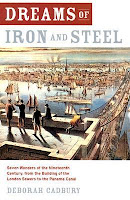This semester I am taking a World Religions class. Yesterday we were talking about Confucianism. Confucianism came about in the 6th century BCE, because Confucius recognized the need for future government officials to be educated so that they could be effective, good leaders. He is considered the first formal educator ever, because previously education had taken place in the home.
Confucius had a powerful influence on the educational setting in many of the Asian countries. Today China still has a highly rigorous education system.
Yesterday, this discussion brought up the idea of education in the western world. Some of the points we talked about were really important and I wanted to share them here.
Wednesday, October 27, 2010
Monday, October 25, 2010
I'm a Mormon!
The "I'm a Mormon" button on the right-hand side is the newest addition to my blog. After class last week I went to mormon.org and created my profile. The profile is still being processed so currently the button doesn't actually take you to my profile, but I am working on getting that fixed. The things we talked about in class helped me realize that there are so many ways to be sharing my beliefs through technology. I decided this would be my first of many ways of trying to do so. Please keep checking back and hopefully the button will start working soon! In the mean time if you have any questions about The Church of Jesus Christ of Latter-Day Saints, please feel free to comment on my blog or contact me. Also, lds.org and mormon.org are great sources for finding information about the church.
Tuesday, October 19, 2010
Presentation
Our group read the book, What Jane Austen Ate and Charles Dickens Knew. It was really interesting. It discussed different aspects of England in the 19th century. We each read different sections of the book. The sections that I read talked about orphans and doctors. For my presentation I made a movie on Picasa. Enjoy this quite short and simple movie. I had never used Picasa before, but it was great to learn about it. It is an amazing way to share pictures and information, and I’m definitely going to use it again.
Change of Plans
Our group had a difficult time finding 3 copies of the book we chose. We also found out that only the first 30 pages were on Google Books.
So we changed our book to . . .
What Jane Austen Ate and Charles Dickens Knew
By: Daniel Pool
So we changed our book to . . .
What Jane Austen Ate and Charles Dickens Knew
By: Daniel Pool
Wednesday, October 13, 2010
The Jacquard Loom
Joseph-Marie Jacquard was born in the mid-1700’s in France to a family in the textile industry. Although he initially explored the areas of book binding and cutlery later, after the death of his parents and after being involved in the French Revolution, he returned to the textile industry and designed what became known as the Jacquard loom. The Jacquard loom made it so that the loom could make the same highly-detailed patterns time after time. This was possible because of the cards with holes in them that directed the weaving, with each card correlating to one row of the design. As one source described, “the Jacquard loom used a system of hooks and needles to lift the appropriate warp threads. The pattern was stored on a collection of thick paper cards perforated with rectangular holes. As the fabric was woven, the hooks were held stationary by the surface of the card. However, whenever a hole was encountered, a hook would be allowed to pass through to lift its thread. By stringing together a large number of cards, an intricate pattern could be created. ”
Saturday, October 9, 2010
Women of the 19th century
Our group narrowed it down to the 3 books that we wanted to read the most. We ran into a little difficulty finding 3 copies of any one of them. However, thanks to Google Books, we were able to make our decision.
We chose Transforming Women's Work: New England Lives in the Industrial Revolution by: Thomas Dublin. It looks at the experiences of women in the 19th Century.
We chose Transforming Women's Work: New England Lives in the Industrial Revolution by: Thomas Dublin. It looks at the experiences of women in the 19th Century.
Tuesday, October 5, 2010
We could read . . .
Here are some options we can choose from for our book club:
Working Women, Literary Ladies: The Industrial Revolution and Female Aspiration
By: Sylvia J. Cook
I found this book through a search at BarnesandNoble.com. It looks at the changing opportunities for women in the 19th and early 20th centuries due to the industrial revolution. It also discusses the literary works written by women in those circumstances.
Transforming Women's Work: New England Lives in the Industrial Revolution
By: Thomas Dublin
I also found this book through a search at BarnesandNoble.com. It follows the work experiences of women throughout the 1800’s and captures their story through their diaries, letters, etc.
Dreams of iron and steel : seven wonders of the nineteenth century, from the building of the London sewers to the Panama Canal
By: Deborah Cadbury
I found this book through a catalog search for the Provo City Library. It focuses on the amazing engineering accomplishments of the 19th century.
I found this book at Shelfari. Unlike many books that look at the negative conditions of the Industrial Revolution, this book takes the approach of looking at the important progress that was made because of it.
The Industrial Revolution, 1760-1830
By: T. S. Ashton
I found this book at Shelfari. Unlike many books that look at the negative conditions of the Industrial Revolution, this book takes the approach of looking at the important progress that was made because of it.
Subscribe to:
Comments (Atom)




